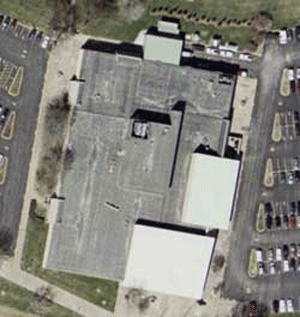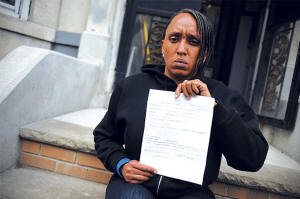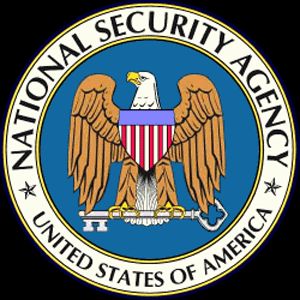by History Commons
3/28/16
NOTICE: THIS WORK MAY BE PROTECTED BY COPYRIGHT
YOU ARE REQUIRED TO READ THE COPYRIGHT NOTICE AT THIS LINK BEFORE YOU READ THE FOLLOWING WORK, THAT IS AVAILABLE SOLELY FOR PRIVATE STUDY, SCHOLARSHIP OR RESEARCH PURSUANT TO 17 U.S.C. SECTION 107 AND 108. IN THE EVENT THAT THE LIBRARY DETERMINES THAT UNLAWFUL COPYING OF THIS WORK HAS OCCURRED, THE LIBRARY HAS THE RIGHT TO BLOCK THE I.P. ADDRESS AT WHICH THE UNLAWFUL COPYING APPEARED TO HAVE OCCURRED. THANK YOU FOR RESPECTING THE RIGHTS OF COPYRIGHT OWNERS.
Russell Tice was a participant or observer in the following events:
Late 2002-Early 2003: AT&T Constructs Secret Surveillance Facility in Main Operations Center

An aerial view of the AT&T Easylink Service building in Bridgeton, Missouri, where the NSA allegedly has secret facilities. [Source: USGS via Microsoft]
On behalf of the National Security Agency (NSA), AT&T constructs a secret, highly secured room in its network operations center in Bridgeton, Missouri, used to conduct secret government wiretapping operations. This is a larger and more elaborate “data mining” center than the one AT&T has constructed in San Francisco (see January 2003). Salon’s Kim Zetter will later write that the Bridgeton facility “had the earmarks of a National Security Agency operation,” including a sophisticated “mantrap” entrance using retinal and fingerprint scanners. Sometime in early 2003, AT&T technician Mark Klein (see July 7, 2009) discusses the Bridgeton facility with a senior AT&T manager, whom he will only identify as “Morgan.” The manager tells Klein that he considers the Bridgeton facility “creepy,” very secretive and with access restricted to only a few personnel. Morgan tells Klein that the secure room at Bridgeton features a logo on the door, which Klein will describe as “the eye-on-the-pyramid logo which is on the back of the dollar bill—and that got my attention because I knew that was for awhile the logo of the Total Awareness Program” (TIA-see Mid-January 2002, March 2002 and November 9, 2002). Klein notes that the logo “became such a laughingstock that they [the US government] withdrew it.” However, neither Klein nor Morgan find the NSA secure room at Bridgeton amusing. In June 2006, two AT&T workers will tell Zetter that the 100 or so employees who work in the room are “monitoring network traffic” for “a government agency,” later determined to be the NSA. Only government officials or AT&T employees with top-secret security clearance are admitted to the room, which is secured with a biometric “mantrap” or highly sophisticated double door, secured with retinal and fingerprint scanners. The few AT&T employees allowed into the room have undergone exhaustive security clearance procedures. “It was very hush-hush,” one of the AT&T workers will recall. “We were told there was going to be some government personnel working in that room. We were told: ‘Do not try to speak to them. Do not hamper their work. Do not impede anything that they’re doing.’” (Neither of Zetter’s sources is Klein, who by the time Zetter’s article is published in 2006, will have made his concerns about the NSA and AT&T public.) The Bridgeton facility is the central “command center” for AT&T’s management of all routers and circuits carrying domestic and international Internet traffic. Hence, it is the ideal location for conducting surveillance or collecting data. AT&T controls about a third of all bandwidth carrying Internet traffic to and from homes and businesses throughout the US. The two employees, who both will leave AT&T to work with other telecommunications firms, will say they cannot be sure what kinds of activities actually take place within the secret room. The allegations follow those made by Klein, who after his retirement (see May 2004) will submit an affidavit stating his knowledge of other, similar facilities in San Francisco and other West Coast switching centers, whose construction and operations were overseen by the NSA (see January 16, 2004 and January 2003); the two AT&T employees say that the orders for the San Francisco facility came from Bridgeton. NSA expert Matthew Aid will say of the Bridgeton facility, “I’m not a betting man, but if I had to plunk $100 down, I’d say it’s safe that it’s NSA.” Aid will say the Bridgeton facility is most likely part of “what is obviously a much larger operation, or series of interrelated operations” combining foreign intelligence gathering with domestic eavesdropping and data collection. Former high-level NSA intelligence officer Russell Tice will say bluntly: “You’re talking about a backbone for computer communications, and that’s NSA.… Whatever is happening there with the security you’re talking about is a whole lot more closely held than what’s going on with the Klein case.” The kind of vetting that the Bridgeton AT&T employees underwent points to the NSA, both Aid and Tice will say; one of the two AT&T employees who will reveal the existence of the Bridgeton facility will add, “Although they work for AT&T, they’re actually doing a job for the government.” Aid will add that, while it is possible that the Bridgeton facility is actually a center for legal FBI operations, it is unlikely due to the stringent security safeguards in place: “The FBI, which is probably the least technical agency in the US government, doesn’t use mantraps. But virtually every area of the NSA’s buildings that contain sensitive operations require you to go through a mantrap with retinal and fingerprint scanners. All of the sensitive offices in NSA buildings have them.” The American Civil Liberties Union’s Jameel Jaffer will add that when the FBI wants information from a telecom such as AT&T, it would merely show up at the firm with a warrant and have a wiretap placed. And both the NSA and FBI can legally, with warrants, tap into communications data using existing technological infrastructure, without the need for such sophisticated surveillance and data-mining facilities as the ones in Bridgeton and San Francisco. Both AT&T and the NSA will refuse to comment on the facilities in Bridgeton, citing national security concerns. [SALON, 6/21/2006; KLEIN, 2009, PP. 28-30]
January 10, 2006: Whistleblower Says NSA Spied Illegally on American Citizens

Russell Tice. [Source: ABC News]
Former National Security Agency (NSA) official Russell Tice says that many of the wiretapping operations he once helped run were illegal. “I specialized in what’s called special access programs,” Tice tells ABC News. “We called them ‘black world’ programs and operations.” Tice is ready to testify before Congress about what he calls the illegal wrongdoings that are part of the Defense Department and the NSA’s wiretapping programs enacted after the 9/11 attacks. Many of these programs were targeted at innocent US citizens. “The mentality was we need to get these guys, and we’re going to do whatever it takes to get them,” he says. The technology used to track and sort through every domestic and international telephone center is impressive. “If you picked the word ‘jihad’ out of a conversation, the technology exists that you focus in on that conversation, and you pull it out of the system for processing.” Intelligence analysts use the information to develop graphs that resemble spiderwebs linking one suspect’s phone number to hundreds or even thousands more. While the president has admitted giving orders that allowed the NSA to eavesdrop on a small number of Americans without warrants, Tice says says the number of Americans subject to eavesdropping by the NSA could be in the millions if the full range of secret NSA programs is used. “That would mean for most Americans that if they conducted, or you know, placed an overseas communication, more than likely they were sucked into that vacuum.” Tice has been subjected to what appears to be bureaucratic punishment for his willingness to blow the whistle on the nation’s warrantless wiretapping programs; last year the NSA revoked his security clearance based on what it calls "psychological concerns," and later fired him. Tice says that is the way the NSA often deals with employees it considers troublemakers and whistleblowers (see January 25-26, 2006). [ABC NEWS, 1/10/2006; ABC, 1/10/2006]
January 25-26, 2006: NSA Allegedly Uses False Psychological Characterizations to Curb Whistleblowers
Current and former National Security Agency (NSA) employees say that the agency often retaliates against whistleblowers by labeling them “delusional,” “paranoid,” or “psychotic.” They say such labeling protects powerful superiors who might be incriminated by potentially criminal evidence provided by such whistleblowers, and helps to keep employees in line through fear and intimidation. One NSA whistleblower, former intelligence analyst Russell Tice, is currently the victim of such agency allegations. Tice, along with three other former analysts, Diane Ring, Thomas Reinbold, and another analyst who wishes to remain anonymous, make the allegations of unfounded psychological labeling by the agency; their allegations are corroborated by a current NSA officer who also wishes to remain anonymous. [CYBERCAST NEWS SERVICE, 1/25/2006]
Identifying a Potential Spy -- Tice, a former signals intelligence (SIGINT) officer, is the first NSA whistleblower to capture the media’s attention, when in 2004, the Pentagon investigated possible NSA retaliation against him. In 2001, Tice reported that a co-worker at the Pentagon’s Defense Intelligence Agency (DIA) was possibly engaged in espionage for China, possibly connected to California Republican official and Chinese double agent Katrina Leung. [DEMOCRACY NOW!, 1/3/2006; CYBERCAST NEWS SERVICE, 1/25/2006] Tice says, “I saw all the classic signs” in the DIA employee. After transferring to the NSA in November 2002, he reported his concerns again, this time adding criticisms of incompetence for the FBI, who in Tice’s view failed to properly investigate his allegations. Instead, Tice was ordered by NSA Security to undergo psychiatric evaluation. He was labeled “paranoid” and “psychotic” by NSA forensic psychologist Dr. John Michael Schmidt; Tice lost his top-secret security clearance as a result. [CYBERCAST NEWS SERVICE, 1/25/2006]
Fired -- He was fired from the NSA in 2005 after spending his last years at the agency pumping gas and working in an agency warehouse. “I reported my suspicion and got blown off,” he says. “I pushed the issue and that ticked them off, the fact that I questioned their almighty wisdom.” [COX NEWS SERVICE, 5/5/2005] Tice again made news on January 10, 2006 (see January 10, 2006), when he admitted to being a source for the New York Times’s article about a secret NSA electronic surveillance program against American citizens, a program carried out in the name of combating terrrorism. [ABC NEWS, 1/10/2006]
No Evidence of Mental Instability -- As for Tice’s own psychological evaluation by Schmidt, according to three other clinical psychologists, there is “no evidence” of either of the disorders in Tice’s mental makeup. And another NSA psychologist pronounced Tice mentally sound in 2002, though having a “somewhat rigid approach to situations.” Tice is described by five retired NSA and intelligence officials as “congenial,” “enthusiastic,” and “a scholar of high intellectual rigor [with] sound judgment [and] unparalleled professionalism.” Tice says of the NSA’s attempts to smear whistleblowers with apparently baseless psychological allegations, “This nonsense has to stop. It’s like Soviet-era torture. These people are vicious and sadistic. They’re destroying the lives of good people, and defrauding the public of good analysts and linguists.” But it has been effective in cowing others who were, in Tice’s words, “too afraid or ashamed to come forward.” [CYBERCAST NEWS SERVICE, 1/25/2006]
Further Allegations -- Another former analyst, now employed by another federal agency and who only allows himself to be identified as “J,” describes similar targeting by the NSA. J is fluent in an unusually high number of languages, and is described by former colleagues as “brilliant” and possessed of “amazing” critical skills. “I believe the abuse is very widespread,” J says. “The targeted person suddenly is described as ‘not being a team player,’ as ‘disgruntled,’ and then they’re accused of all sorts of bizarre things. Soon they’re sent to the psych people.” J himself was targeted in September 1993 (see September 11, 1993) when he and other analysts concluded that the United States was being targeted by Islamic terrorists, and then again in early 2001 after predicting a terrorist attack using planes as weapons (see May 2001).
NSA Like the 'Gestapo' -- A third whistleblower, a current NSA officer who refuses to be identified, confirms the allegations and says that baseless psychiatric allegations as a form of retaliation are “commonplace” at the agency. He says, “A lot of people who work there are going through the same thing. People live in fear here. They run it like some kind of Gestapo.” Those identified as “problems” are “yelled at, badgered and abused.…These are really good people, who start to be labeled crazy, but they’re telling the truth.” The official adds that the NSA often plants false evidence in personnel files as part of the intimidation campaign. Tice says the NSA maintains what he calls a “dirt database” of inconsequential but potentially embarrassing information on employees, gathered during routine clearance investigations and used as a form of leverage. The current officer says that an “underground network” has developed to discuss these issues. “It’s like the Nazis have taken over,” he says. [CYBERCAST NEWS SERVICE, 1/25/2006]
Personal Vendettas -- Diane Ring is another former NSA official targeted by her superiors. Unlike Tice, a self-described conservative who believes President Bush should be impeached over the NSA’s illegal wiretapping program, Ring is a Bush supporter who believes the surveillance program is entirely proper. Ring, a former NSA computer scientist, says she was ordered to undergo psychiatric evaluations after coming into conflict with a colonel at the Pentagon. Ring is not a whistleblower per se like the others, but says she was targeted for retaliation because of a personal vendetta against her. The colonel “blew up” at Ring after she missed a meeting and explained that her branch chief had her working on a classified program that took priority over the meeting. Ring also was evaluated by Dr. Schmidt. When she complained about the apparent retaliation, her security clearance was, like Tice’s, revoked, and she was “red-badged,” or put on restricted access within the NSA offices. Ring says she received an excellent job evaluation just three months prior to the actions taken against her. She says her colleagues at the time were told not to talk to her, and she was restricted to working in a room filled with other red-badgers. She thinks she was isolated as part of an intentional campaign to force her to leave the agency. “They had these red-badgers spread out all over the place.” she recalls. “Some were sent to pump gas in the motor pool and chauffeur people around. In our room, some people brought sleeping bags in and slept all day long. Others read. I would think that would incense the taxpaying public.” Schmidt eventually reported that another doctor diagnosed Ring with a “personality disorder,” but Ring has a July 21, 2005 letter from that doctor, Lawrence Breslau, which reads in part, “On mental status examination including cognitive assessment she performs extremely well.” In the letter, Breslau says he never made such a diagnosis. She, like others in her position, went to the NSA Employee Assistance Service (EAS) for confidential counseling, but the current NSA officer says that though those sessions are supposed to be confidential, NSA officials can and do obtain “confidential” sessions for retaliatory purposes. “Their goal is to freak you out, to get inside your mind,” that officer says. Rice claims that NSA General Counsel Paul Caminos lied about her case before a judge, denying that he had sent an internal e-mail forbidding anyone from supporting Ring. Ring says she was “floored” by Caminos’s actions: “I served in Bosnia. We had mines going off all around us, all day long. That was nothing compared to this.” She is currently working on clearing her name with the NSA’s new director, Lieutenant General Keith Alexander. Ring believes that the problem at NSA involves a small number of people, “The whole lot of them is corrupt though. There is zero integrity in the process. And zero accountability.”
MR. WALTERS: Rehabilitation Project Force. That is a disciplinarian level. When a person is not following the written policy and intentions of L. Ron Hubbard, or they failed in any way to either get people's money or to brainwash them or handle somebody who goes to an official, he is then put in a very degraded position, which will be, like, being stripped of, you know, what ever titles he has. He has to wear dirty old clothes, a dirty rag. He must clean floors and sewers and things like that until he realizes how degraded he is. And when he does that, he is allowed, then, to come back. During that time, he is not allowed to talk to anyone; no Scientologist can talk to him. He is treated in a degraded manner; it's technology.
***
MS. TAVERNA: When I was at the Fort Harrison, there was a thing called the RPF, which is the Rehabilitation Project Force. I never felt good about this. There's a lot of things in Scientology that I never felt good about. I saw them and kind of just didn't understand them, especially, when I saw some of my friends in this RPF, very nice, good people. One day they would be fine and smiling and, then a good friend of mine, the next day, she was in this RPF. She was -- everyone in it has to wear blue. They wear blue shorts and shirts. They're not allowed to speak to anyone. They had to always run; you're never allowed to stop. If you stopped running, you're punished or put into something more severe, which is called the RPF's RPF, if you break the rules. That's something that most Scientologists don't know about. I didn't know that much about it at the time. But all I know is what I saw. I saw a few people who looked very sick. One woman had sores all over her body, open sores. I went into my friend. I asked her if I'm allowed to speak to her. She said, "You can speak to your friend, but in the RPF they're not allowed to communicate to anyone outside the RPF." So, I went to her, and she kept her head down. And when I addressed her, I said -- her eyes were all swollen, she had been crying. And I said, "What happened?" She said she couldn't talk about it, and she said -- she called me "Sir." As a matter of fact, this is the person who recruited me for that Operation Z, a very bright, beautiful, young girl. And in the RPF, if anyone speaks to you, you have to address them as "Sir." And I felt very upset for her. I cried, thinking that she was calling me "Sir." But she just said, "It's going to be fine," you know, through tears in her eyes. And I don't know the details of why she got in there. People in the RPF are not allowed to eat with the rest of the people. After we finished eating, they would come and eat whatever, you know, was left, you know, same food, though, but never sit at the table with another person. They're considered a lower -- you know, a lower level. And the purpose of it is to rehabilitate them because they have become so degraded and so psychotic that they have to be separated and go through this particular physical work. They work for half a day and get audited or processed for half a day until they come up to the next level.
***
MR. RAY: I went to talk to my supervisor and the second I — that I mentioned that I was sick, okay, he got extremely violent in his tone of voice to me and started yelling at me and screaming at me, saying, you know, "Don't get sick. We need you to work. You can't have any time off, period. There's no way we're going to let you have any time off." And I just said, "Wait a minute." I was just too tired to argue. So, I would go up with my cart, like I was cleaning rooms, and I would open up one of the rooms that was empty and I'd lay down and go to sleep. I was just so tired; There was — I could barely carry myself up the stairs, just barely make it. And I'd go in there and go to sleep. And I did that several times. And eventually — this was right before I left — I wound up in the RPF, Rehabilitation Project Force. And was I in for a surprise. What it is is a group of people that have done something, what they consider, against the Church of Scientology, okay? The Rehabilitation Project Force is the last thing they do to try to save your being before they kick you out, okay? And I was scared to death to be kicked out, because me, along with everybody else who's there, has a basic need inside to do something good for somebody else, okay? And we were led to believe that we were doing something good for a whole lot of people, and — we didn't want to lose that. I didn't want to lose that. So, I said, "Okay. I'll go into the RPF." So, I went in there. And basically, what it is is emptying all the garbage out of the restaurants, okay? Restaurant garbage is wet; it's old food; it's got flies and all kinds of bugs crawling around in it. And we would pick up the cans, take them down to the garbage dump, dump them into the garbage dump. And then, at the end of the day, we'd have to go in there in our shoes and stomp it down. And I don't know what kind of diseases we were exposed to, but we were getting some really weird ones, okay? ...And you'd get inside there and this restaurant garbage would be just like quicksand. You'd go all the way to the bottom. You'd be, you know, more than waist deep in this stuff, all right, and it smelled awful. And then, you'd have to go back and clean up, okay? And the food that they served the RPFers was just rotten. They served all the leftovers after all of the staff on the whole base, all the buildings, ate, okay? Then, we ate alone, whatever was left over. And it wasn't very good. And it didn't give us the nourishment that we needed to keep our bodies going....Good grief. It would be pieces — sometimes, pieces of meat, pieces of beef or chicken or pork, usually a salad and a drink. But the salad was wilted and it smelled rotten, like, it had been — you know, somebody had dumped sour milk on it. The cheese was no good. It was all molded, but molded to the point it was fuzzy, you know, like a peach. And one time they had french fries there, and I picked up a handful of french fries and started eating them and I found a french fried palmetto bug in my french fries. And I wondered how many I had eaten, you know, when I saw that one. So, I threw that out.
-- City of Clearwater Commission Hearings Re: The Church of Scientology, State of Florida, City of Clearwater
'Psychiatric Abuse' 'Very Widespread' -- Like his fellow whistleblowers, former NSA officer Thomas Reinbold says the practice of “psychiatric abuse” inside the NSA is “very widespread.” Reinbold, who recelved 26 commendations and awards during his career at the NSA, including a medal for the intelligence he provided during the 1991 Gulf War, says, “They call it ‘doing a mental’ on someone.” Such practices have a “chilling effect” on other potential whistleblowers: “They fear for their careers because they fear someone will write up bad [psychological] fitness reports on them.” Reinhold was labeled “paranoid” and “delusional” by Schmidt after he complained to an inspector general on February 25, 1994, that the federal government was guilty of contract tampering; Schmidt’s evaluation contradicts a psychological evaluation he conducted on Reinbold eight months before that found he was mentally sound. At the time, Reinbold worked as a contracting officer representative for the Naval Security Group (NAVSECGRU) in Virginia. Reinbold had his high-level security clearance revoked, and was escorted off the grounds by armed security officers. Reinbold says NSA officials fabricated evidence in his personnel file to force him out; that evidence included allegations that he was a danger to himself and others, and that he had said “if [he] was going down, [he] would take everyone with him.” In September 1995, an administrative hearing found that the revocation of Reinbold’s security clearance was unjustified and recommended restoring his clearance, but did not allow the damaging information to be removed from his personnel file. He later sued the agency, and then retired because of diabetes. “I gave 29 years of my life to the intelligence community,” he recalls. “They couldn’t get me out the door fast enough. There are very good people, getting screwed and going through hell.”
Helping Those Who Come After -- Some of the whistleblowers hope to gain the assistance of politicians to help their cases. But Tice is less optimistic. “Our time is over,” Tice says he told Ring. “But we can make a difference for those who come behind us.” The five whistleblowers have the support of the whistleblower advocacy group Integrity International. Its founder and director, Dr. Don Soeken, himself a whistleblower while he was with the US Public Health Service in the 1970s, says, “When this retaliation first starts, there’s a tendency by bosses to use code words like ‘delusional,’ ‘paranoid’ and ‘disgruntled’. Then they use psychiatric exams to destroy them. They kill the messenger and hope the PR spin will be bought by the public.” Tom Devine of the Government Accountability Project says that “psychiatric retaliation” is a knee-jerk reaction against whistleblowers: “It’s a classic way to implement the first rule of retaliation: shift the spotlight from the message to the messenger. We call it the ‘Smokescreen Syndrome.’” Superiors investigate and smear the whistleblower for anything from financial irregularities to family problems, sexual practices, bad driving records, or even failure to return library books, Devine says. “It’s a form of abuse of power.” The Whistleblower Protection Act was written to protect those like Tice, Ring, Reinbold, and Soeken, but, says Beth Daly of the Project on Government Oversight (POGO), the act has serious flaws. “You have to go through the inspector general or the director of the CIA to let them know if you’re going to Congress and what you’re going to disclose,” she says. “And inspector generals are notorious for revealing who whistleblowers are.”
Entity Tags: Paul Caminos, Project for Government Oversight, Naval Security Group, Russell Tice, Tom Devine, Thomas Reinbold, National Security Agency, US Public Health Service, Keith Alexander, Lawrence Breslau, Diane Ring, Defense Intelligence Agency, Beth Daly, Don Soeken, House National Security Subcommittee, Government Accountability Project, John Michael Schmidt, Integrity International, “J”
February 14, 2006: NSA Official Says Agency Has More Extensive Surveillance Program Than Previously Reported
Former National Security Agency (NSA) intelligence analyst and current whistleblower Russell Tice tells the House Government Reform Subcommittee on National Security, Emerging Threats, and International Relations that he worries about what he calls a “special access” electronic surveillance program that is far more wide-ranging than the warrantless wiretapping recently exposed by the New York Times. However, Tice says he is forbidden by law to reveal specifics of the program to Congress. Tice says he believes the program violates the Constitution’s protection against unlawful search and seizures, but for him to discuss it with anyone in Congress or even with the NSA’s inspector general would violate classification laws. A spokesman for Congressman Dennis Kucinich (D-OH) says both Kucinich and committee chairman Christopher Shays (R-CT) believe that a few members of the Armed Services Committee have high enough security clearances for Tice’s information: “Congressman Kucinich wants Congressman Shays to hold a hearing [on the program]. Obviously it would have to take place in some kind of a closed hearing. But Congress has a role to play in oversight. The [Bush] administration does not get to decide what Congress can and can not hear.” In January 2006, it emerged Tice was one of the sources for the New York Times’s revelation that the NSA is engaged in possibly illegal wiretapping of American civilians as part of the war on terror (see January 10, 2006). Tice was fired from the NSA in 2005 and labeled “paranoid,” a classification Tice says was pasted on him in retaliation for his whistleblowing both inside the agency and to the public (see January 25-26, 2006). [UNITED PRESS INTERNATIONAL, 2/14/2006] Author James Bamford, an expert on US intelligence, says, “The congressional intelligence committees have lost total control over the intelligence communities. You can’t get any oversight or checks and balances; the Congress is protecting the White House and the White House can do whatever it wants.” [IN THESE TIMES, 5/15/2006]




